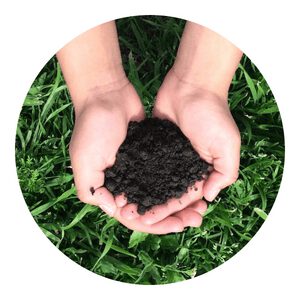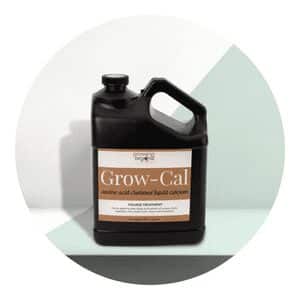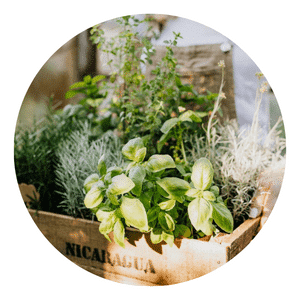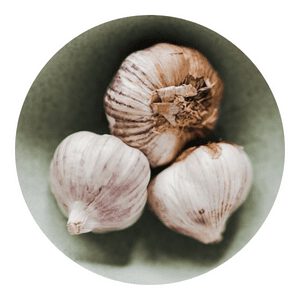How To Grow Organic Parsnip
Organic parsnips are a sweet and nutty root vegetable that can be enjoyed in a variety of dishes.
With the proper care and attention, you can easily grow your own organic parsnips in your garden or container.
Growing organic parsnips does require some dedicated effort, but the results will be worth it when you can experience the flavor of your freshly grown vegetables.

Parsnip Menu
What Are Parsnips?
Parsnips are a root vegetable closely related to carrots, and they have been a popular food since the time of Ancient Rome.
These white-fleshed root vegetables can be roasted, mashed, boiled, or even eaten raw in salads.
While some people may not be familiar with them, parsnips are an excellent source of dietary fiber and Vitamin C.
If you’ve ever considered growing your own organic parsnip crop at home, you might be wondering what exactly they are and how to go about it.
Parsnips thrive best in cool weather with plenty of direct sunlight and can handle light frosts as well.
Planting should take place between late March and July after the soil has warmed up sufficiently.
Before planting these delicious roots into the ground, make sure to work manure into the soil for maximum nutrient absorption by the plants.
Seed Selection: Choose Organic
Growing organic parsnip is an important and rewarding activity, but it all starts with the right seed selection.
Choosing organic seeds is the best way to ensure that you’re harvesting a healthy crop of parsnips.
Organic seeds are produced without any synthetic pesticides or chemicals, making them much healthier for you and your environment.
Organic seed selections are also more likely to be locally sourced, so you’ll be getting fresher, better tasting vegetables in the end.
Plus, many local farms grow their own varieties of heirloom vegetables, so choosing organic can help you get unique flavors that are specific to your area!
Additionally, when selecting organically grown seeds they often produce higher yields due to their lack of chemical exposure.
Soil Preparation: Amend and Test
Soil Preparation: Amend and Test is an essential step for growing organic parsnip.
Whether you plan to grow parsnip in your backyard garden or in a raised bed, it’s important to make sure your soil has the right pH balance and nutrient content for these vegetables to thrive.
Preparing soil involves amending it with organic matter such as compost and manure, and testing it for acidity or alkalinity levels.
Doing this ahead of time will help ensure that your parsnips receive the necessary nutrition they need during their growth cycle.
Amending soil is an easy process with big rewards.
Compost adds nutrients, like nitrogen, phosphorus, and potassium, which helps the plant’s root system grow more effectively.
Adding manure can also improve drainage while providing essential trace elements such as zinc and iron.
Planting Technique: Spacing and Depth
Planting parsnip correctly is essential for a successful crop.
When deciding when to plant parsnip, it’s important to consider the spacing and depth of the seeds.
The spacing between each seed should be about three inches apart in rows that are 12-18 inches away from each other.
Planting too closely can cause the roots of adjacent plants to become entangled, reducing yield and leading to disease issues.
The correct depth for planting parsnip is around one inch deep so that the soil remains soft enough for germination, which usually takes 10-14 days.
Using a hoe or other tilling tool can help make sure they are planted at an even depth while also removing any weeds and aerating the soil before you plant.
In the garden, an organic parsnip grows, a beauty veiled beneath the earth's repose. With patience, care and dedication too, a flavorful snack from a patch of hue seems no small feat for gardener's feet. Inviting taste a wondrous treat, remember to tend it through rain and sun, for season's best another year will come!
Chappy The Gardener
Careful Harvesting: When and How
Parsnip is a delicious root vegetable that adds flavor and nutrition to many dishes. It’s one of the most popular vegetables in gardens, but you need to be careful when harvesting it.
Knowing when and how to harvest parsnip can help ensure you get the best yield from your garden.
Harvesting parsnips should be done in late fall or early winter once the first frost has occurred.
This is because cold temperatures create a natural sweetness in the root vegetable, making them more tasty. When ready for harvesting, carefully dig around the plant with a spade or fork, being sure not to damage the roots beneath.
If possible, remove any weeds from around the area before beginning so as not to disturb them further during digging.
Pest Control Options: Keeping Bugs Away
Pest control is an important part of any organic gardening project, especially when it comes to growing parsnips.
When it comes to keeping bug away, there are a variety of options available to gardeners.
Organic pest control methods are the most effective way to keep pests away from your parsnip plants while still preserving the health and safety of your soil and other plants in your garden.
Organic pest control can be as simple as introducing beneficial bugs like ladybugs or praying mantis that feed on common pests like aphids and caterpillars.
Other natural alternatives include using natural repellents such as garlic oil or cayenne pepper spray, which can be sprayed directly onto the leaves of parsnip plants to discourage insect infestation.
For more serious infestations, consider using a bait trap system with baits specifically designed for certain kinds of bugs.
Benefits of Using Organic Fertilizer for Parsnip
Organic farming is becoming increasingly popular, and using organic fertilizers to grow vegetables such as parsnip can provide many benefits.
Organic fertilizers are made from natural sources such as plants, animals, and minerals, making them safe for use on edible crops.
Organic fertilizer is an excellent choice when growing parsnips because it provides essential nutrients while also improving the soil’s texture and structure.
It helps retain moisture in the soil which can be beneficial during dry spells or droughts, allowing the plant to take up water more easily.
Additionally, organic fertilizer contains beneficial organisms that help break down other compounds into a form that’s easier for plants to absorb.
Tips for Choosing the Right Organic Fertilizer
Organic parsnip is a nutritional and delicious addition to any garden.
However, it is important to ensure parsnip is grown in the right soil environment in order to produce healthy, delicious vegetables.
Organic fertilizer is an essential tool for ensuring proper growth and nutrition of your organic parsnips. Here are some tips for choosing the right organic fertilizer:
First, consider what type of organic matter will best suit your parsnip plants.
Compost or manure can provide great nutrition, but be sure to check that they’re free from weed seeds or chemical residues.
Manure should also be aged or composted before use; this will help break down harmful substances such as ammonia and reduce its odor.
Additionally, look for fertilizers that contain natural minerals like sulfur and iron which can add trace elements to the soil needed for strong root development.
Manure
Organic gardening is becoming increasingly popular as people become more aware of the importance of natural and organic food.
Growing organic parsnip is a great way to provide nutritious produce for your family while reducing your environmental impact.
One great way to naturally enrich the soil that parsnip needs to grow properly is by using manure.
Manure can be applied directly to the ground before you plant or mixed into your compost pile.
When choosing manure, it’s important to pick one that has been aged at least six months so it’s not too fresh and can be used safely in your garden.
Fresh manure may contain harmful bacteria that could potentially affect your health if ingested with vegetables grown in contaminated soil.
Also, make sure to use a fertilizer low in nitrogen – since high nitrogen levels can burn plants, kill their roots and stunt their growth overall.
Compost
Composting is a great way to grow organic parsnips with maximum yield and nutrition.
Parsnips are a root vegetable that can be used in many dishes and provide essential vitamins and minerals to your diet.
To get the most out of your parsnip plants, it’s important to use compost during their growth cycle.
Begin by adding compost or finished manure into the soil when preparing for planting season.
This will add essential nutrients and help create an environment where parsnip plants can thrive.
Throughout the growing season, you should supplement with additional compost every three weeks or so, depending on the type of soil in your garden bed.
Make sure to mix up the soil regularly in order to ensure good drainage, aeration, and optimal nutrient levels for healthy plant growth.
Blood Meal
Organic parsnip is a popular root vegetable that can be easily grown in any home garden.
One of the best ways to make sure you get a large and healthy crop of parsnips is to use blood meal when planting them.
Blood meal is an organic fertilizer made from dried, ground up animal blood and it provides a great boost of nitrogen to help your parsnips grow faster and stronger.
When planting your seeds, mix 1/2 cup of blood meal into the soil for each 10 square foot area.
Then sow your seeds directly into the soil or start them indoors or in containers before transferring them outside once they have germinated.
Fish Emulsion
Organic parsnips are a nutritious and delicious root vegetable.
But to get the best crops, it’s important to give them the right nutrition. One way to do this is with fish emulsion fertilizer.
Fish emulsion is an organic fertilizer made from whole fish or fish by-products. It contains essential nutrients like nitrogen, phosphorus, and potassium that help plants grow strong and healthy.
Here’s how you can use it to give your parsnip crop a boost: Start by purchasing a quality organic fish emulsion fertilizer at your local nursery or garden center.
When you’re ready to fertilize your plants, mix 1 teaspoon of the concentrate into 1 gallon of water and apply it directly around each plant’s base. Reapply every two weeks throughout the growing season for best results.
Kelp Meal
Organic parsnips are a popular root vegetable that can be added to many recipes.
If you want to grow organic parsnips in your own garden, adding kelp meal is an excellent way to improve the soil and help your plants thrive.
Kelp meal is made from seaweed and contains trace minerals, hormones, growth stimulants and other nutrients that will benefit your parsnip crop.
Read on for tips on how to use kelp meal to successfully grow organic parsnips in your garden.
When planting parsnips in the spring, mix one part kelp meal with four parts of aged compost or aged manure into the top six inches of soil before sowing the seeds.
This will provide beneficial nutrition for the young plants as they begin their growing season.
Can you grow Parsnip in a Raised Beds
Growing parsnip in a raised bed can be an effective and rewarding way to produce your own organic vegetables.
Parsnip is a root vegetable, with a sweet flavor, that can be used in many recipes or eaten raw.
Whether you are looking for an easy vegetable to grow that requires minimal effort, or simply want to add something new to your garden – growing parsnips in raised beds could be the perfect choice!
Raised beds require less labor than regular gardening as they allow you to easily access the plants without bending down.
With proper soil drainage, adequate light and water – parsnips can thrive in a raised bed environment.
To begin growing parsnip in a raised bed, start by preparing your soil with compost or aged manure.
Next, add a layer of hay or straw mulch to provide weed control, water retention and insulation for the roots.
Parsnips prefer a pH level that is neutral to slightly alkaline – so be sure to test your soil before planting.
How long does it take to grow parsnips?
Growing organic parsnips can be a rewarding and satisfying endeavor.
Parsnips are easy to grow, and they have many nutritional benefits.
But if you’re wondering how long does it take to grow parsnips, the answer depends on several factors.
Parsnips require about six weeks of cold weather before planting; this helps them form their sweet taste.
Planting should occur in late spring when soil temperatures reach 40°F or above.
They will then need up to 180 days until harvest time. If you want quicker results, try ‘early’ varieties that mature in as little as 120 days from sowing the seeds.
In mild climates, there is also an opportunity for a second crop in late fall with some varieties taking only 85-115 days until ready for harvesting!
Is parsnip hard to grow?
Parsnip, an increasingly popular root vegetable, is a great addition to any garden.
But is parsnip hard to grow? The answer depends on a few factors, including climate and soil type.
When growing organic parsnip in the right environment, it can be relatively easy to grow and maintain.
Parsnips prefer cooler temperatures than most other vegetables and need rich, well-drained soil with plenty of compost or manure added in.
They also require full sun exposure for best results.
With these conditions met, gardeners should have success growing this oft-forgotten veggie.
Parsnip does require patience for success though; it takes about 140-180 days from planting until harvest time!
How late can you plant parsnip?
Growing your own organic parsnip can be a rewarding experience, with the sweet root vegetable serving as an excellent addition to a variety of dishes.
But how late can you plant parsnip? When it comes to planting parsnip, some gardeners believe that the best time for planting is in early spring.
However, there are certain varieties that may be planted later in the season and still yield a successful harvest.
For those who want to try their hand at growing parsnip later in the season, it’s important to take into account both climate and soil conditions.
Parsnips prefer cooler temperatures and moist soil in order to germinate successfully.
If conditions are right, then you can enjoy success even if you start sowing your seeds as late as mid-June or July.
What month do you plant parsnips?
Growing organic parsnips is a great way to add flavor and color to your garden. In order to have a successful harvest, knowing when and how to plant them is essential.
You should know that these root vegetables are cold-weather crops, so they can be planted as soon as the soil can be worked in early spring or late fall.
For an earlier harvest, sow the seeds indoors four weeks before the last average frost date in your area.
Parsnips require 120 days of growth time from planting until they are ready for harvest, so it’s important that you keep this timeline in mind when deciding when to sow your seeds.
Planting too early could mean that the roots will not develop properly before winter sets in due to cooler temperatures delaying their growth.
Can I grow parsnips in pots?
Parsnips are a delicious root vegetable that can be used to create many different dishes. It’s easy to grow your own organic parsnips, even if you don’t have a lot of space.
Can parsnips be grown in pots? The answer is yes!
With some basic knowledge and the right container, growing parsnips in pots is an achievable goal for anyone with a green thumb.
The best container for growing parsnip plants should hold at least 18 inches of soil and provide good drainage.
Make sure the pot has one or two holes at the bottom so excess water can escape easily.
You should also fill the pot with nutrient-rich soil such as compost or manure to help promote healthy growth of your plants.
In conclusion, growing organic parsnips can be one of the most rewarding gardening experiences.
From choosing the best variety for your climate to harvesting and storing the crop, there are lots of factors to consider when growing organic parsnips.
With plenty of patience and a few tips, you can be sure you’ll have a delicious harvest in no time.
Good luck! Remember that with a little effort, you can grow healthy produce in your own backyard.
Click To Grow
Helps Us Grow – Share If You Like



















